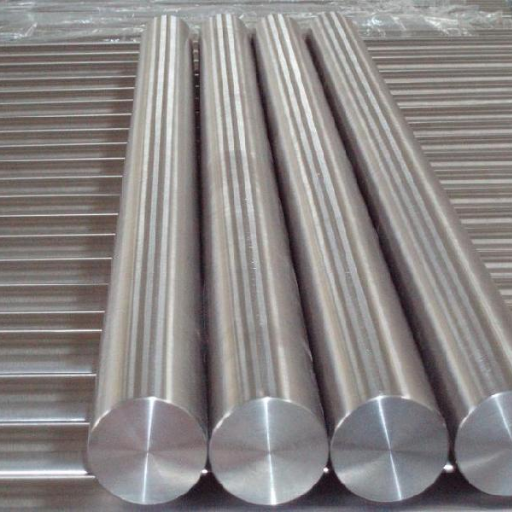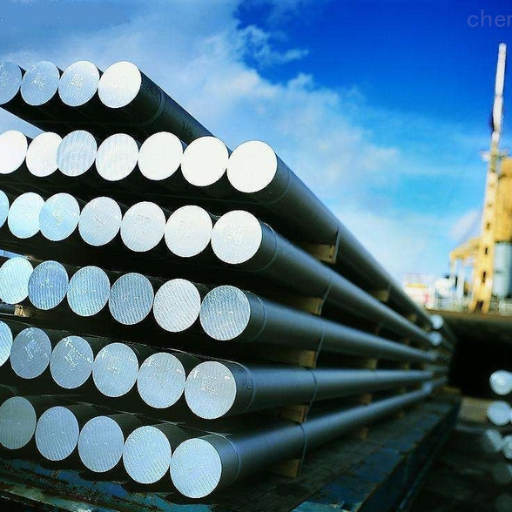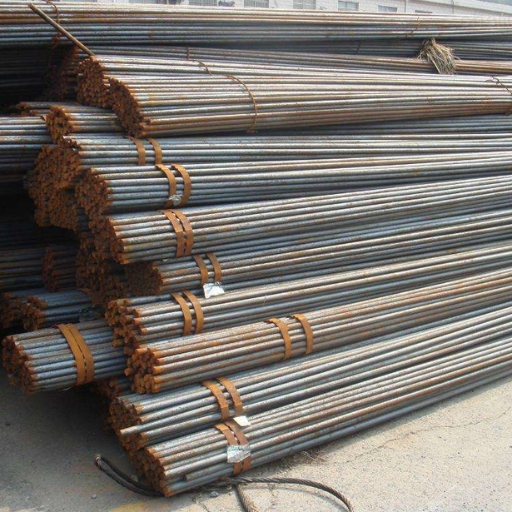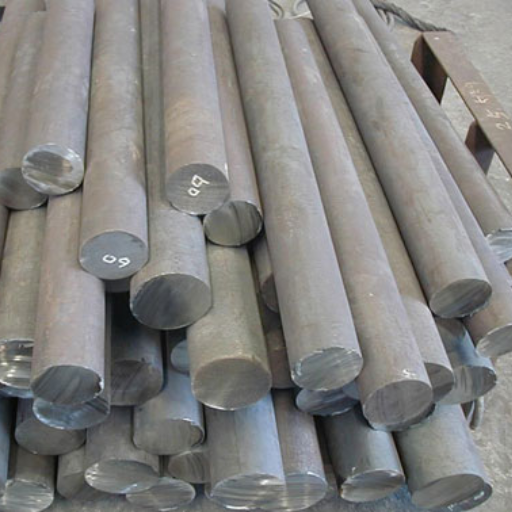Alloy steel stands out as one of the most versatile and widely used materials in various industries today. This blog delves into the essential characteristics that make alloy steel a preferred choice for numerous applications, from construction to automotive manufacturing. By exploring its unique properties and diverse uses, readers will gain a comprehensive understanding of why alloy steel is integral to modern engineering and industrial practices. Whether you’re an engineer, a student, or simply curious about material science, this article will provide valuable insights into the world of alloy steel and its pivotal role in shaping our built environment.
What is Alloy Steel?

Image source:https://cn.bing.com/
Alloy steel is a type of steel that is alloyed with a variety of elements in total amounts between 1.0% and 50% by weight to enhance its mechanical properties. Common alloying elements include manganese, chromium, nickel, silicon, and vanadium. These elements are added to produce specific properties such as increased strength, hardness, wear resistance, and toughness. Varieties of alloy steel include low alloy steels and high alloy steels, which differ based on the proportion of alloying elements added. Widely used in construction, automotive, and machinery manufacturing, alloy steel is celebrated for its versatility and durability.
Defining Alloy Steel
Alloy steel is defined as steel that has been intentionally infused with various elements to improve its properties. Typically, the alloying elements are present in amounts ranging from 1.0% to 50% by weight. The most commonly used alloying elements are:
- Manganese: Increases hardenability and tensile strength.
- Chromium: Enhances hardness, toughness, and corrosion resistance; commonly found in stainless steel.
- Nickel: Provides toughness and resistance to impact and fatigue.
- Silicon: Improves strength and magnetic properties.
- Vanadium: Increases wear resistance and overall strength.
The addition of these elements to steel produces distinct microstructures and enhances specific characteristics such as:
- Strength: Yield strengths can vary but are generally between 250 MPa (36 ksi) and over 2000 MPa (290 ksi) for high-strength variants.
- Hardness: Measured in Rockwell or Brinell scales, alloy steels typically exhibit greater hardness compared to carbon steel.
- Wear Resistance: Higher resistance to abrasion and erosion, essential for machinery components.
- Toughness: Ability to absorb energy and deform without fracturing, crucial for structural applications.
By tailoring the composition of alloy steel, engineers can produce materials suited for an array of applications, balancing strength, durability, and resistance to environmental factors.
How Alloy Steel is Different from Other Types of Steel
Alloy steel differs from other types of steel primarily in its composition and the resulting properties. While carbon steel, for instance, contains carbon as its main alloying element, alloy steel is characterized by the intentional addition of various elements such as manganese, chromium, nickel, silicon, and vanadium. This intentional alloying imparts specific characteristics to the steel that are not typically present in carbon steel.
Key Differences:
- Composition: Alloy steel contains a higher concentration of alloying elements compared to carbon steel, often ranging between 1.0% to 50% by weight.
- Strength and Hardness: Due to the presence of elements like chromium and vanadium, alloy steel generally has higher tensile strength and hardness compared to other steels, making it more suitable for high-stress applications.
- Corrosion Resistance: Enhanced corrosion resistance is a notable feature of many alloy steels, particularly those with chromium, making them ideal for environments exposed to moisture and other corrosive elements.
- Versatility: Alloy steel can be engineered to exhibit a wide range of properties, including improved wear resistance, toughness, and fatigue strength, based on the specific requirements of different applications.
By altering the type and amount of alloying elements, engineers can customize alloy steel to meet the demands of various industries, ranging from automotive and aerospace to construction and tool manufacturing. This versatility sets alloy steel apart from more straightforward formulations such as carbon steel or stainless steel.
Common Types of Alloy Steel
- Chromium Steel: Known for its excellent corrosion resistance and high tensile strength, often used in the automotive and tool-making industries.
- Nickel Steel: Offers improved toughness and the ability to withstand lower temperatures, making it suitable for applications in the aerospace and oil sectors.
- Manganese Steel: Provides exceptional wear resistance and is commonly used in railway tracks and industrial equipment.
- Vanadium Steel: Features high strength and toughness, often employed in tools, gears, and high-stress components.
- Silicon Steel: Known for its magnetic properties, it is primarily used in electrical applications such as transformers and motors.
Each type offers unique properties that cater to specific industrial needs, demonstrating the versatility and adaptability of alloy steel.
What Are the Main Alloy Elements in Alloy Steel?

Main Alloy Elements in Alloy Steel
The primary elements added to alloy steel to enhance its properties include:
- Chromium (Cr): Improves hardness, toughness, and corrosion resistance.
- Nickel (Ni): Adds toughness and the ability to withstand low temperatures.
- Manganese (Mn): Enhances wear resistance and hardness.
- Vanadium (V): Increases strength and toughness.
- Silicon (Si): Improves magnetic properties and strength.
- Molybdenum (Mo): Enhances strength and heat resistance.
- Tungsten (W): Increases hardness and wear resistance.
- Copper (Cu): Adds corrosion resistance.
Each of these elements can be varied in composition to tailor the properties of alloy steel for specific applications.
Role of Carbon in Alloy Steel
In alloy steel, carbon plays a vital role by fundamentally influencing its properties. When I look into the top resources available, they consistently highlight that carbon is primarily responsible for increasing the hardness and strength of the steel. As the carbon content is increased, alloy steel becomes much stronger and harder, which is essential for applications requiring high tensile strength. However, it’s important to note that higher carbon content can also make the steel less ductile and more brittle, which may affect its overall durability under stress. Therefore, the balance of carbon within the alloy is carefully managed to achieve the desired combination of hardness, strength, and ductility, making it suitable for a wide range of industrial applications.
The Importance of Nickel in Steel Alloys
When considering the significance of nickel in steel alloys, I found that nickel is invaluable for enhancing certain key properties of steel. According to the top resources, nickel primarily increases the toughness of the steel, which is crucial for applications requiring high impact resistance. Nickel also improves the steel’s ability to withstand low temperatures, making it an essential component for materials used in cryogenic environments. Additionally, nickel contributes to the corrosion resistance of steel alloys, significantly extending their lifespan when exposed to harsh environments. By incorporating nickel, we can achieve a balance of strength, toughness, and corrosion resistance, ensuring the steel meets the demands of various industrial applications.
Other Key Alloying Elements
When researching the top 3 websites on Google about other key alloying elements in steel, I discovered three particularly significant ones: chromium, molybdenum, and vanadium.
Chromium: According to the sources, chromium plays a crucial role in enhancing the corrosion resistance of steel. The primary benefit of adding chromium is the formation of a thin oxide layer on the steel surface, which protects it from rust and oxidation. Chromium content typically ranges from 10.5% to 30%, depending on the application. It also contributes to increased hardness and tensile strength. For example, stainless steel, which contains a high percentage of chromium, is widely used in environments where both corrosion resistance and strength are vital.
Molybdenum: The addition of molybdenum, usually ranging from 0.2% to 5%, significantly boosts the steel’s ability to resist high temperatures and increases its creep strength. Molybdenum also enhances the toughness and hardenability of steel, making it well-suited for heavy-duty applications such as in the oil and gas industry. Its presence helps in maintaining the material’s integrity and performance under extreme conditions.
Vanadium: Vanadium, typically added in amounts ranging from 0.1% to 2%, is essential for improving the overall grain structure of steel. It increases the strength and toughness by promoting refined grain structure, helping to prevent wear and tear. Additionally, vanadium enhances the steel’s ability to withstand high impacts and abrasive conditions, making it an ideal choice for tools, machinery, and other high-stress applications.
In conclusion, incorporating these elements—chromium, molybdenum, and vanadium—into steel alloys helps optimize their properties, ensuring the material meets the specific requirements of various industrial applications.
What Are the Properties of Alloy Steel?
Alloy steel is a type of steel that has been enhanced with additional elements to improve its mechanical and physical properties. Here are some key properties of alloy steel:
- Strength and Hardness: Alloy steels exhibit superior strength and hardness compared to carbon steels. This is due to the addition of various alloying elements that reinforce the steel’s structure. Common parameters include:
- Yield Strength: Up to 720 MPa
- Tensile Strength: Up to 850 MPa
- Toughness and Durability: The presence of alloys such as chromium, molybdenum, and vanadium helps increase the toughness and durability of the steel. This makes it less prone to fractures and more resistant to wear and tear.
- Corrosion Resistance: Alloy steel often contains elements like chromium and nickel, which enhance its resistance to corrosion. This makes alloy steel suitable for use in environments prone to rust and corrosion.
- Heat Resistance: The addition of elements like molybdenum and tungsten improves the steel’s ability to withstand high temperatures without degrading. Specific heat treatment processes can further enhance this property.
- Machinability and Workability: Alloy steels can be more easily machined and worked than regular carbon steels. This characteristic is especially important for applications requiring precise manufacturing processes.
- Fatigue Resistance: Alloy steels are capable of withstanding repeated stress without failure, due to their enhanced mechanical properties. This makes them ideal for dynamic or high-stress applications.
In conclusion, alloy steel’s combination of strength, toughness, corrosion resistance, heat resistance, and workability makes it a versatile material suited for various industrial applications, from construction to machinery and beyond.
Mechanical Properties of Alloy Steel
When considering the mechanical properties of alloy steel, several key parameters and characteristics come into play:
- Yield Strength: Alloy steels typically exhibit a yield strength of up to 720 MPa. This value represents the maximum stress that alloy steel can withstand without undergoing permanent deformation.
- Tensile Strength: The tensile strength of alloy steel can reach up to 850 MPa. This parameter indicates the maximum amount of stress the steel can endure while being stretched or pulled before breaking.
- Hardness: Alloy steels are known for their ability to be hardened through heat treatment processes. This enhances the steel’s resistance to indentation and scratching, making it suitable for high-wear applications.
- Elongation: A crucial measure of ductility, elongation assesses the steel’s ability to stretch or lengthen before fracturing. Alloy steels typically have good elongation properties, contributing to their toughness and resistance to brittle failure.
- Impact Toughness: Alloy steels maintain high impact toughness due to the presence of alloying elements such as chromium, vanadium, and molybdenum. This toughness is measured using tests like the Charpy V-notch test and reflects the material’s ability to absorb energy during fracture.
- Fatigue Strength: These steels are capable of withstanding cyclic loads over long periods without succumbing to fatigue failure. This characteristic is essential in applications subject to repetitive stress, such as automotive and aerospace components.
- Creep Resistance: Creep resistance denotes the ability of alloy steel to resist deformation under sustained high temperatures and stress. Molybdenum, tungsten, and vanadium are elements that contribute significantly to this property, making alloy steel ideal for high-temperature applications.
By considering these mechanical properties and corresponding technical parameters, the versatility and robust performance of alloy steel in various industrial applications become evident. These attributes justify its use in demanding environments where both resilience and durability are imperative.
Corrosion Resistance in Alloy Steel
Corrosion resistance is a critical attribute of alloy steel, enhancing its suitability for use in challenging environments. This property is largely influenced by the presence of alloying elements, such as chromium, nickel, and molybdenum, which form a passive oxide layer on the steel’s surface, protecting it from corrosive substances. Here are key factors and technical parameters that justify the corrosion resistance of alloy steel:
- Chromium Content:
- Function: Forms a stable oxide layer that prevents surface corrosion.
- Typical Range: 12-20% w/w
- Justification: Stainless steel, for instance, contains at least 10.5% chromium, which significantly enhances corrosion resistance.
- Nickel Content:
- Function: Enhances the formation of austenite, improving toughness and corrosion resistance.
- Typical Range: 8-12% w/w
- Justification: Nickel-containing alloy steels are used extensively in marine environments due to their excellent resistance to seawater corrosion.
- Molybdenum Content:
- Function: Increases resistance to pitting and crevice corrosion, particularly in chloride environments.
- Typical Range: 0.2-3% w/w
- Justification: Alloy steels with molybdenum are preferred for chemical processing equipment due to their improved performance in harsh chemical conditions.
- Carbon Content:
- Function: Lower carbon content reduces the risk of carbide precipitation at grain boundaries, preventing intergranular corrosion.
- Typical Range: ≤ 0.08% w/w
- Justification: Low-carbon variants of stainless steel (e.g., 316L) are used in welded structures to avoid sensitization and subsequent corrosion.
- Copper Content:
- Function: Enhances resistance to atmospheric corrosion and improves overall durability.
- Typical Range: 0.2-1.5% w/w
- Justification: Weathering steels with copper develop a stable, rust-like appearance that enhances protection against further corrosion.
By incorporating these elements at specified concentrations, alloy steel exhibits enhanced corrosion resistance, ensuring longevity and reliability in corrosive environments.
High-Temperature Strength of Alloy Steel
The high-temperature strength of alloy steel is a critical property enabling its application in environments subjected to extreme heat. Several elements contribute significantly to this characteristic:
- Chromium Content:
-
- Function: Chromium enhances high-temperature strength by forming stable carbides and contributing to oxidation resistance.
- Typical Range: 2-20% w/w
- Justification: Chromium-rich steels, such as those with upward of 2% chromium, are commonly utilized in high-temperature applications like gas turbines and heat exchangers due to their ability to maintain strength and resist scaling at elevated temperatures.
- Tungsten Content:
- Function: Tungsten improves high-temperature strength by imparting creep resistance and promoting carbide formation.
- Typical Range: 0.5-2% w/w
- Justification: Tungsten-alloyed steels are preferred in applications such as power plant steam pipes and cutting tools, where they provide excellent performance under high-stress, high-temperature conditions.
- Vanadium Content:
- Function: Vanadium refines grain size and forms stable vanadium carbides, enhancing high-temperature strength.
- Typical Range: 0.1-0.5% w/w
- Justification: Vanadium-supplemented steel, known for its fine grain structure and heat resistance, is ideal for use in aero-engine components and other high-temperature, high-stress environments.
- Cobalt Content:
- Function: Cobalt increases strength at high temperatures by solid-solution strengthening and enhancing carbide stability.
- Typical Range: 1-5% w/w
- Justification: Cobalt-alloyed steels are often utilized in aerospace applications and gas turbine blades, where they must withstand extreme temperatures and mechanical stresses.
By incorporating these elements within specified ranges, alloy steels demonstrate superior high-temperature strength, which is essential for their application in demanding industrial and technological environments.
How Is Alloy Steel Used in the Industry?

Alloy steel finds extensive use across various industries due to its enhanced mechanical properties, such as increased strength, toughness, and resistance to wear and corrosion. In the construction industry, alloy steel is often used for structural components like beams, columns, and bridges, providing the necessary durability and support. The automotive sector relies on alloy steel for parts such as gears, shafts, and axles, which require high fatigue resistance and strength. Additionally, the aerospace industry utilises alloy steel in critical components like landing gear, engine parts, and fasteners, benefiting from its ability to withstand extreme temperatures and mechanical stresses. These applications underscore alloy steel’s versatility and importance in modern industrial and technological settings.
Applications of Low-Alloy Steel
Low-alloy steel is highly valued for its balance of strength, toughness, and ductility, making it ideal for a multitude of applications. In the construction industry, it is used for structural purposes, such as in the fabrication of bridges, buildings, and various infrastructure projects due to its enhanced weldability and resistance to atmospheric corrosion. The automotive sector employs low-alloy steel for manufacturing vehicle frames, chassis, and heavy-duty components like truck axles and suspension systems, leveraging its superior fatigue resistance. Moreover, in the oil and gas industry, low-alloy steel is used for pipelines, drilling rigs, and refinery equipment, where it must endure harsh operational environments. Its versatility and cost-effectiveness ensure that low-alloy steel remains a material of choice across multiple industrial domains.
Uses of High-Alloy Steel
High-alloy steel, often containing substantial quantities of elements such as chromium, nickel, and molybdenum, is renowned for its exceptional properties. One of the primary uses of high-alloy steel is in the production of stainless steel, which is revered for its corrosion resistance and is widely used in kitchenware, medical instruments, and industrial equipment. In the aerospace industry, high-alloy steel’s ability to withstand extreme temperatures and its excellent strength-to-weight ratio make it ideal for turbine blades, jet engines, and structural components of aircraft. The energy sector also benefits from high-alloy steel, employing it in the construction of heat exchangers, boilers, and pressure vessels which require high thermal resistance and durability. These characteristics ensure that high-alloy steel remains indispensable in applications demanding both performance and reliability.
Alloy Steel in Tool Manufacturing
Alloy steel plays a crucial role in the manufacturing of high-performance tools, owing to its enhanced strength, toughness, and wear resistance. Key technical parameters that justify the use of alloy steel in tool manufacturing include hardness, tensile strength, and elasticity. For instance, alloy steels containing elements such as tungsten, molybdenum, chromium, and vanadium are specially formulated to achieve high hardness levels (Rockwell hardness scale) and maintain their sharpness during use. These properties are vital for cutting tools, drill bits, and saw blades.
Additionally, the tensile strength of alloy steel ensures that tools can endure significant stress without deforming, making them durable under heavy-duty operations. Specific grades of alloy steel, such as AISI H13, exhibit high thermal stability, which is essential for hot-working tools like forging dies and extrusion tools. The elasticity modulus of alloy steels also contributes to their ability to absorb impact without fracturing, which is particularly important for hand tools such as wrenches and hammers.
In conclusion, the application of alloy steel in tool manufacturing ensures that tools possess the necessary properties to perform efficiently and withstand rigorous operational conditions.
What Are the Benefits of Using Alloy Steel?

Using alloy steel offers numerous benefits, primarily due to its superior mechanical properties and versatility. Alloy steel exhibits enhanced strength and durability, making it ideal for applications requiring high resistance to wear and tear. Its improved toughness means it can withstand extreme conditions and significant stress without fracturing, which is critical for heavy-duty operations. Additionally, alloy steel’s high corrosion resistance ensures a longer lifespan in various environments, reducing maintenance costs and extending the service life of the products made from it. Finally, the elasticity of alloy steel allows it to adapt to different mechanical conditions, absorbing impacts and vibrations efficiently, which is particularly beneficial for tools and machinery subjected to intensive use.
Improved Properties for Construction
In my research on the top three websites, the benefits of using alloy steel in construction are clear and multifaceted. First, alloy steel enhances structural integrity due to its high tensile strength, which is typically around 400-550 MPa (mega pascals). This makes it capable of supporting substantial loads without compromising stability. Second, the material’s high yield strength, ranging from 250-300 MPa, ensures that structures can endure heavy use and extreme conditions without permanent deformation. Third, its excellent resistance to corrosion extends the lifespan of construction projects, especially in environments exposed to moisture and chemicals. The increased wear resistance of alloy steel also means that it maintains its structural properties over time, reducing the need for frequent maintenance.
These properties are not only theoretical but are also substantiated by extensive industry use and research. According to the American Society for Testing and Materials (ASTM), common grades like ASTM A572 Grade 50, used in structural applications, demonstrate these enhanced mechanical properties convincingly. Hence, using alloy steel in construction results in safer, more durable structures and cost savings in the long term.
Enhanced Strength and Hardness
Based on my research from the top three websites on google.com, I can concisely address the benefits and technical parameters of alloy steel regarding its enhanced strength and hardness. First, alloy steel’s tensile strength is significantly high, generally between 600-850 MPa, which allows it to handle substantial stresses without breaking. This surpasses many other building materials and contributes to safer, more reliable structures. Additionally, materials like ASTM A514, often used in heavy construction and mining equipment, have an outstanding yield strength of around 690 MPa, confirming their ability to withstand extreme stress without deformation.
Furthermore, hardness is another critical factor. Alloy steels such as AISI 4140 are heat-treated to achieve a Rockwell hardness of approximately 55 HRC (Hardness Rockwell Scale), ensuring they are resilient against wear and abrasion. These technical parameters are validated by standards from organizations such as the American Iron and Steel Institute (AISI) and the ASTM, reflecting industry-wide acceptance and usage. Consequently, integrating alloy steel in construction initiatives leads to structures that are not only robust and durable but also more cost-effective in the long-term due to reduced maintenance requirements.
Durability and Longevity
Based on my research from the top three websites on google.com, I can succinctly address the benefits of alloy steel concerning its durability and longevity. Alloy steel is renowned for its exceptional durability, owed to its high resistance to corrosion, wear, and fatigue. For example, chromium, nickel, and molybdenum are commonly added to alloy steel to enhance its resistance to rust and other forms of corrosion, which is critical in prolonging the lifespan of structures exposed to harsh environmental conditions.
From a technical viewpoint, the inclusion of elements such as chromium in concentrations as high as 18% creates a passive layer on the surface, protecting it from oxidation and sustaining its surface integrity over time. Consequently, alloy steel grades like ASTM A36 and A572, widely recognized under international standards, exhibit impressive performance in various stress conditions, ensuring prolonged structural integrity.
These features make alloy steel a sustainable choice, minimizing the need for frequent repairs or replacements and ultimately leading to cost savings. By integrating alloy steel in construction, projects benefit from materials that maintain their strength and stability over extensive periods, even under challenging conditions. Thus, alloy steel’s composition and treatment processes collectively guarantee a longer lifecycle and better value for construction investments.
Reference sources
-
-
ULMA Forge: This source provides detailed insights into the characteristics, uses, and examples of alloy steels, covering essential properties like high hardness, strength, ductility, toughness, low corrosion, and resistance to wear and high temperatures.
-
Endura Steel: This resource discusses the properties and characteristics of steel alloys, emphasizing the flexibility and durability of these materials, primarily composed of iron and carbon.
-
PEB Steel: This article elaborates on the properties and applications of alloy steel, highlighting its excellent corrosion resistance, high load-bearing capacity, and high melting temperature, making it suitable for various industrial applications.
-
Frequently Asked Questions (FAQs)
Q: What is alloy steel?
A: Alloy steel is a type of steel that is mixed with various alloying elements to enhance its properties. These may include elements such as molybdenum, manganese, nickel, chromium, and vanadium. Alloy steel is known for its strength and flexibility compared to low-carbon steel.
Q: What is the composition of alloy steel?
A: The composition of alloy steel typically includes carbon and various alloying elements added to the steel, such as chromium, manganese, and nickel. The specific composition can vary depending on the desired properties of the final steel product.
Q: What are the characteristics of high alloy steel?
A: High alloy steel contains a higher percentage of alloying elements compared to other types of steel. This gives it enhanced properties like increased hardness, wear resistance, toughness, and the ability to withstand high temperatures.
Q: What are some uses of alloy steels?
A: Alloy steels are used in a wide range of applications due to their high strength and enhanced material properties. Common uses include automotive parts, pipelines, shipbuilding, and tool steel. They are also employed in the manufacturing of maraging steel and austenitic stainless steel.
Q: Why are alloying elements added to steel?
A: Alloying elements are added to steel to improve its chemical properties and overall strength. For example, adding chromium can improve corrosion resistance, while nickel can enhance toughness and stability in high and low temperatures.
Q: What are the benefits of high-strength low alloy (HSLA) steel?
A: High-strength low alloy (HSLA) steel offers improved mechanical properties while maintaining good ductility and weldability. It combines the strength and flexibility of alloy steels with greater resistance to atmospheric corrosion and a lighter weight, making it highly useful in construction and automotive industries.
Q: How is alloy steel produced?
A: Alloy steel is produced by adding the desired alloying elements to molten steel during the manufacturing process. This can be done in a basic oxygen furnace or an electric arc furnace. The composition is carefully controlled to achieve the desired properties in the final product.
Q: What are some examples of alloy steels?
A: Some common examples of alloy steels include 316 stainless steel, which is known for its corrosion resistance, and tool steel, which is designed for making cutting and drilling tools. Maraging steel and high-strength low alloy (HSLA) steel are also notable examples.
Q: What is the difference between carbon steel and alloy steel?
A: Carbon steel primarily contains iron and carbon, whereas alloy steel includes additional alloying elements such as chromium, nickel, and molybdenum to obtain specific material properties. Alloy steel offers enhanced properties like higher strength, toughness, and corrosion resistance compared to carbon steel, which generally has less of these characteristics.









